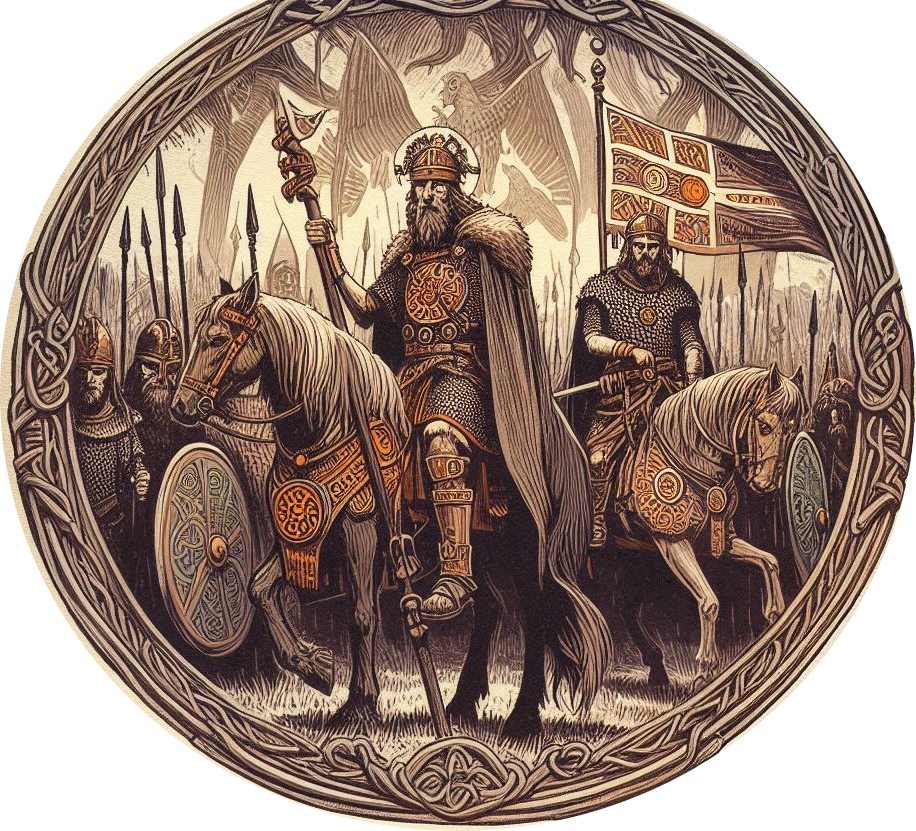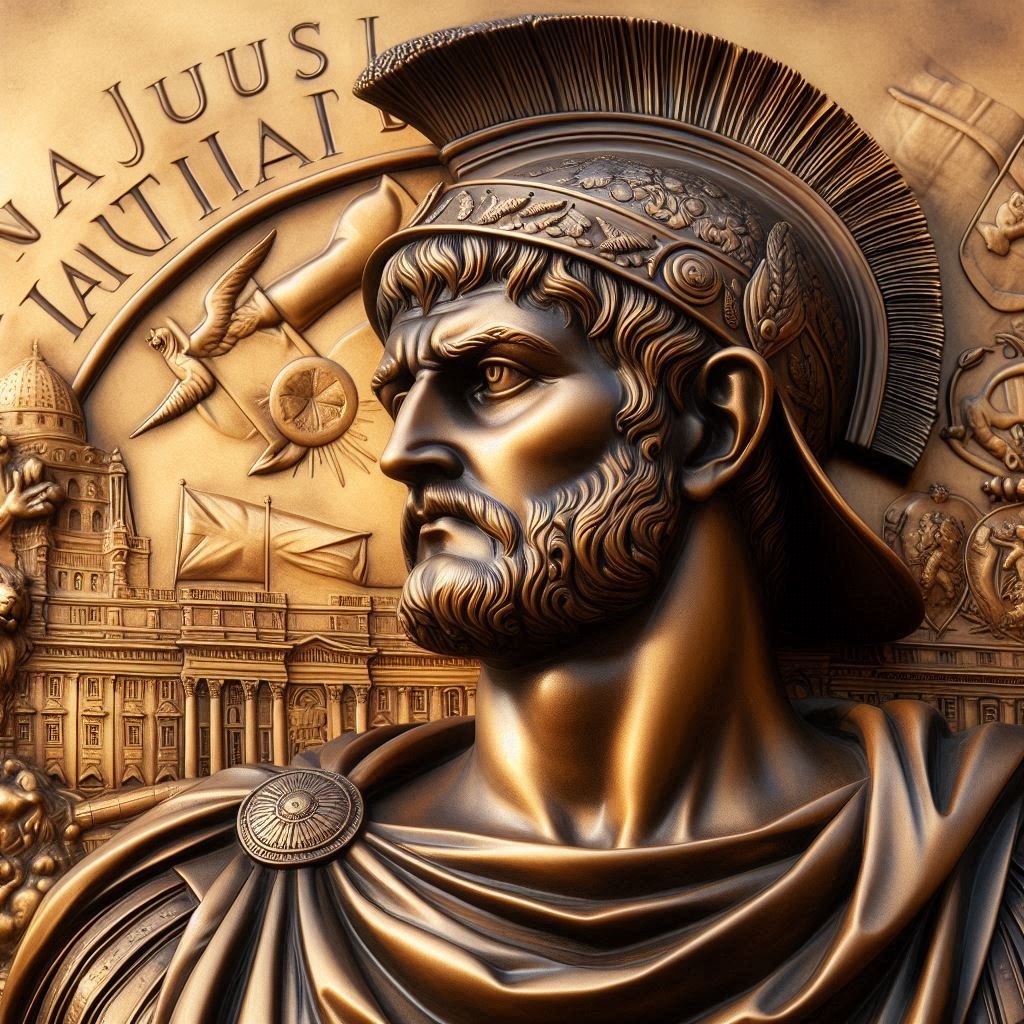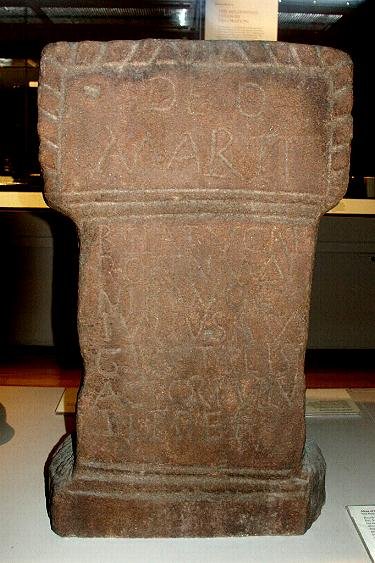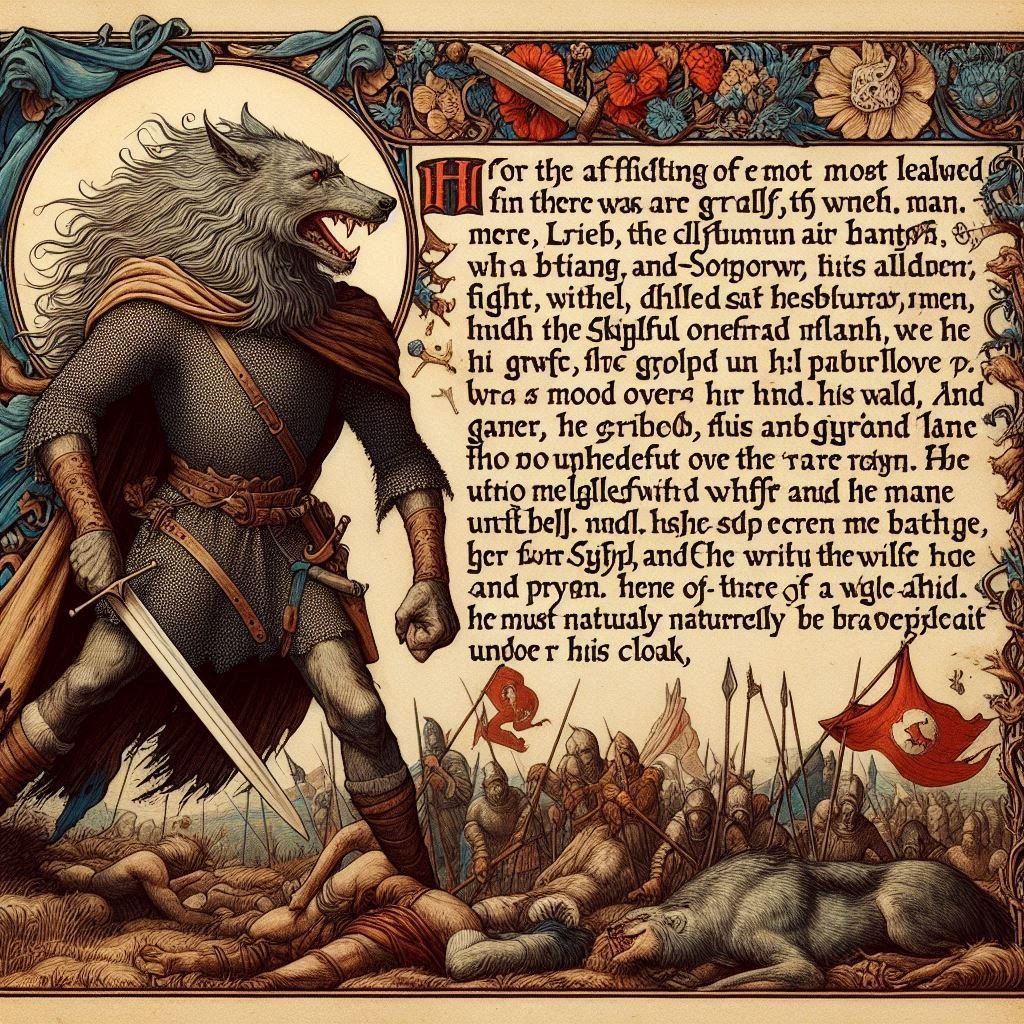Glossary of Latin (Roman) terms
ala a cavalry unit usually at this period about 500 strong divided into squadrons(turmae) and commanded by a praefectus.
amphora a large pottery container for transporting commodities wine, oil, fish sauce (garum) etc. to distant parts of the empire. It became a unit of liquid measure.
aquila the eagle standard of the legions, considered to be a symbol of the legion and was in consequence its most precious possession; normally kept in the sacellum of the principia.
as a copper coin of the first and second century, equivalent to half a dupondius
which was made of a ‘brass’ alloy.
auxilia the general term for the Roman allies who provided troops for the army to assist the legions. Satisfactory service led to citizenship on discharge.
ballista a spring-gun of which there were several kinds and sizes used normally by legionaries. The small gun (carro-ballista) was mounted on a cart, was provided for each century and operated by ten men.
burgus a small fortified post usually controlling a main road
centuria the smallest operational unit in a legion and auxiliary cohort consisting of 80 men commanded by a centurion and divided into eight contubemia (mess or tent parties).
civitas a tribe and its territory.
civium romanorum title on receiving the award of Roman citizenship; when given
to auxiliary units as a reward for outstanding services, it is denoted by the letters C R as part of the unit’s title.
Classis Britannica the fleet based on Britannia.
clientela the client-patron relationship, whereby the clients owed allegiance to a patron who in turn undertook responsibility for them.
cognomen the third name of the tria nomina of a citizen, usually peculiar to the individual.
cohors a military unit of about 500 men when it was known as quingenaria. Those
1000 strong were milliarii.
cohors equitata a part-mounted auxiliary unit.
colonia a settlement of retired army veterans who were usually given land
allotments.
comites literally ‘companions’, but used here as members of the imperial retinue of Claudius.
consilium a council or assembly of leaders.
corona civica the civic crown of oak leaves awarded to soldiers for saving the life of a citizen.
cos ord the title of the two senior magistrates of Rome who entered office on the 1st January, giving their names to the year.
cos suff the title of the pairs of magistrates who became consuls after the consulares ordinarii, and usually holding office for three months.
curator aquarum the title of the senator in charge of the Roman water supply,
normally it was a pro-consular appointment.
cursus honorum the steps in promotion open to a member of the senatorial class.
denarius the silver Roman coin, 25 of which were equivalent to the gold aureus.
dolabra an iron tool with a pick at one end and hoe-like blade at the other, carried by legionaries and used for digging ditches.
duplicarius a junior commander in an auxiliary ala in charge of a turma, and so-
called as he was given double pay.
evocatus a soldier, often a praetorian, who continued to serve after his normal
period of service.
fasces a bundle of rods bound round an axe, which became a symbol of law and
authority and carried by lictors before a consul and magistrates.
gemina a title given to a legion when it was created by splitting one into two, as with Legio XIV Gem.
gladius the short thrusting sword used by legionaries.
hiberna winter quarters where units spend the winter ‘under canvas’.
insignia triumphalia the special toga, sceptre and wreath worn at a triumph.
legatus a man to whom the Emperor delegated responsibility, as with legionary
commanders and provincial governors.
legatus legionis the commander of a legion.
legio a legion comprising Roman citizens and consisting of 10 cohorts, nine of
which were quingenary (i.e. 500 strong) and the first, probably from the Flavian
period, milliary (i.e. 1000 strong).
limes originally a dividing path between fields, but later a name given to a frontier zone.
lorica segmentata a cuirass made of horizontal strips of steel, held together by
vertical leather bands, worn by legionaries.
macellum a market-place, often for one kind of goods, such as meat or fish.
miles a soldier; sometimes the qualifying gregarius is used with it to indicate the common soldier or private.
murus gallicus a term used for an early type of Iron Age rampart which was laced
with horizontal timbers.
nemeton a Celtic word for a shrine or temple appears as a place-name, such as
Aquae Arnemetiae.
oppidum the Latin word for any native settlement, but it has usually been
restricted by British archaeologists to an area protected by Gallo-Belgic dykes, as at Camulodunum.
ornamenta triumphalia insignia and awards given to victorious commanders and
consuls, instead of a triumph, in imperial times.
ovatio a triumph of lesser degree than the triumphus itself, which was reserved for Emperors, the last person to receive the ovatio who was not a member of the Imperial family was Aulus Plautius (Suet. Claudius, 24).
pabulor to forage, hence used for military forage parties (Caes Bell. Civ.i 59; pi. 4).
paludamentum the cloak worn by commanders and senior officers to distinguish
them from the sagum of the ordinary soldier.
pax Romana the peace imposed and held by Rome.
pilum the javelin used by legionaries. It was seven feet long mostly consisting of a wood shaft. The iron shank was left flexible but the pyramidal point was hardened.
piscina an ornamental pool usually surrounded by colonnaded walks, as dis-
tinguished from a natatio i.e. a swimming pool.
polls the Greek word for a city used by Ptolemy for native settlements (Rivet and Smith, 105).
praefectus a commander of an auxiliary unit at this period.
praefectus equitatus a man with an unusual command of a force of cavalry as may
have been given to Didius Gallus by Claudius in the invasion of Britain (J LS 970; Epig.Stud. 4 (1967) 65).
praefectus fabrorum an officer in charge of ordnance and workshops.
praetentura that part of a fort or fortress in front of the principia and which is bisected by the via praetoria.
praetorium the house of the commanding officer, normally adjacent to the
principia.
primus pilus literally ‘first javelin’, was the chief centurion of a legion, an office held for a year, after which he became an equestrian and he could enter a higher career structure as one of the primipilares (see Brian Dobson Die Primpilares: Entwicklung und Bedeutung, Laufbahnen und Personlichkeiten eines romischen Offiziersranges 1978).
principia the headquarters building in a fort or fortress and occupying the central position.
quinquennium a five-year period.
retentura that part of a fort or fortress to the rear of the principia.
sesterius a large bronze or ‘brass’ coin equivalent to 4 asses or a quarter of a silver denarius.
spolium literally the skin of an animal but used for the armour stripped from a
defeated enemy and hence a general term (in the plural – spolia) for booty or spoils of war.
terra nigra pottery made in Gaul and imported into Britain in the Claudian-
Neronian period. It was mainly in the form of platters and dishes in a grey ware with a highly polished surface and usually stamped with the maker’s name. It was widely imitated in Britain.
terra rubra pottery made in Gaul and imported into Britain in the Claudian-
Neronian period. It was mainly in the form of cups and bowls in a red ware with a burnished finish and often stamped with the potter’s name.
testudo literally a ‘tortoise’, a technique developed by legionaries — a tight group holding their shields over their head to enable them to advance to a gateway or base of a wall with a battering ram (pi. 3).
tria nomina the three names ‘praenomen, nomen and cognomen’ normally adopted
by a Roman citizen.
triumvir monetalis one of those men in Republican and early Imperial times who
was responsible for the mint in Rome and whose names appear on denarii.
turma a squadron of 32 mounted men in a quingenary ala and probably of 30 in a
turma of a cohors equitata.
via principalis the street which crosses a fort or fortress in front of the principia.











